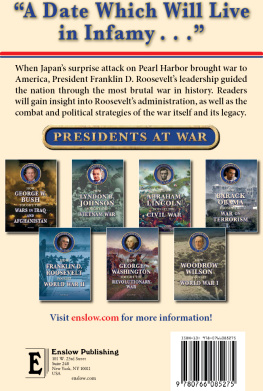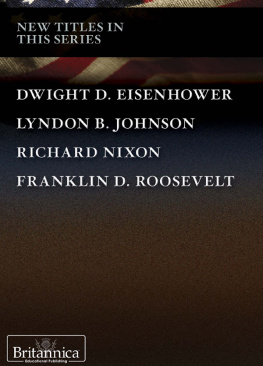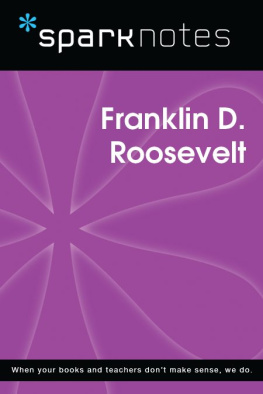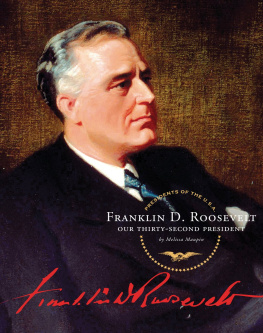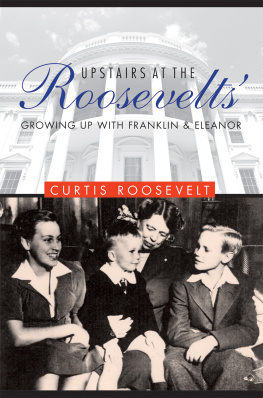First published 2001 by M.E. Sharpe
Published 2016 by Routledge
711 Third Avenue, New York, NY 10017, USA
2 Park Square, Milton Park, Abingdon, Oxon OX14 4RN
Routledge is an imprint of the Taylor & Francis Group, an informa business
Copyright 2001 by Taylor & Francis. All rights reserved.
No part of this book may be reprinted or reproduced or utilised in any form or by any electronic, mechanical, or other means, now known or hereafter invented, including photocopying and recording, or in any information storage or retrieval system, without permission in writing from the publishers.
Notices
No responsibility is assumed by the publisher for any injury and/or damage to persons or property as a matter of products liability, negligence or otherwise, or from any use of operation of any methods, products, instructions or ideas contained in the material herein.
Practitioners and researchers must always rely on their own experience and knowledge in evaluating and using any information, methods, compounds, or experiments described herein. In using such information or methods they should be mindful of their own safety and the safety of others, including parties for whom they have a professional responsibility.
Product or corporate names may be trademarks or registered trademarks, and are used only for identification and explanation without intent to infringe.
Library of Congress Cataloging-in-Publication Data
Franklin D. Roosevelt and the shaping of American political culture / edited by Nancy
Beck Young, William D. Pederson, and Byron W. Daynes.
p.cm.
Includes bibliographical references and index.
ISBN 0-7656-0620-8 (cloth : alk. paper)
I. Roosevelt, Franklin D. (Franklin Delano), 18821945Intluence. 2. Political
cultureUnited StatesHistory20th century. 3. Politics and cultureUnited
StaterHistory20th century. 4. Popular cultureUnited StaterHistory20th century.
5. United StaterPolitics and government1933-1945. I. Young, Nancy Beck. II.
Pederson, William D., 1946 III. Daynes, Byron W.
E806 .F692 2000
973.917092dc21
99-088090
ISBN 13: 978-0-7656-0620-4 (hbk)
Nancy Beck Young
Franklin D. Roosevelt and the Shaping of American Political Culture results from the conference FDR After 50 Years , held at Louisiana State University in Shreveport in September 1995. The volume contains a variety of important chapters detailing the new work and new questions being asked and answered about the various intersections between politics and culture. Targeted for a wide audience, the collection includes chapters about the representation of Franklin D. Roosevelt in film and in household objects, about art and politics, about professional musicians suffering from lost employment opportunities using New Deal relief programs to create new cultural forms, about construction of public buildings and their social and political meanings, and about the implications of military policy for mass culture with regard to baseballs future during World War II. Historians of the New Deal, political historians and political scientists, cultural and social historians, art historians, and literary critics all will find material of interest to their specialties. These distinct chapters, individually insightful, taken together prove the dynamism of a new field of scholarshippolitical culture. How did Americans respond to the economic catastrophe that beset them in 1929? In what way or ways did the social and cultural responses inform the politics of the period and vice versa? How did changed political beliefs alter cultural activities? These are just a few of the questions posed and answered in the chapters of this volume.
Lynn Y. Weiner and Ronald D. Tallman provide an intriguing analysis of Franklin D. Roosevelts representation before the public. This process happened in two ways. First, the president established various representations of himself, all of which allayed public fears about the economy and international security. Second, Americans, enamored with strong emotions toward FDR, used their understanding of his life to craft their own methods of memory and interpretation. The authors suggest that projecting a positive public image was of primary importance to Roosevelt. Their chapter examines the four personas FDR adoptedSphinx, Father, Doctor, and Captain of the Ship of Stateand the manner in which FDR partisans interpreted each in souvenir iconography. These personas represent or reflect both the key points the president wished the American public to understand about his leadership and the reactions of individuals so motivated to enshrine the various concepts in handwork. Through each of these images, the president appeared in complete control of himself and the nation. Furthermore, the authors have examined numerous examples of common objects ranging from toys to pillowcases in which the various images of FDR were translated and transferred to the American public. The chapter that results provides scholars with important clues in understanding the linkages among images as conveyed and received, politics, and the culture out of which each flowed.
Ron Brileys chapter, The Sun Comes Out Tomorrow: Hollywoods Depiction of Franklin D. Roosevelt and the New Deal, From Gabriel Over The White House to Annie , analyzes the film industrys image of FDR and his times. Like Weiner and Tallman, this essay indicates the multifacetedsometimes contradictorynature of popular culture representations of FDR. Unlike Weiner and Tallman, Briley casts a wide net. His concern is not with artifacts and memorabilia generated by FDR partisans, but with the exchange between movie depiction and critical reaction to FDR, his programs, and the fictional representation of them to moviegoing audiences. The latter circumstance ensured a wider distribution than was true of the FDR iconography. More importantly, Briley analyzes the veracity of conservatives who defile the liberal government activism FDR helped to forge and indict the movie industry as a coconspirator in the cultural and social decline of traditional American values. To the contrary, Briley convincingly demonstrates that Hollywoods attitude toward FDR was not always supportive. He cites examples such as Louis B. Mayer and Irving Thalberg, who helped defeat Upton Sinclairs 1934 quest for the California governorship as a Democrat. Mayer and Thalberg feared Sinclairs liberalism, like that of FDR, would weaken their competitive position in the film industry. However, Briley argues that most filmmakers prefer[red] to work through political allegory, assuming that the audience would be able to make some rather obvious connections. Briley asks and answers numerous questions about the contextual political comment and commentary in films made during and after Roosevelts years in office. In this way, the chapter demonstrates the wealth of knowledge that resulted from analyzing the intersections between politics and culture.
Part II moves away from evaluating FDR in popular and political culture media. The chapters in this part look instead at how the New Deal interacted with art, architecture, and music. The Great Depression proved the old maxim that cultural outlets are often the first to suffer funding cuts when the economy tightens. However, New Deal policy makers responded with alacrity to this problem. A total of over $35 million was appropriated for support of the arts in the 1930s. With the exception of Graham Bamfields chapter, all the chapters in look at the interaction between the New Deal and the arts on the local level. In this, the scholarship that follows is representative of larger trends in New Deal studies: examination of policy on the micro level to test the accuracy of the macro theoretical framework.



